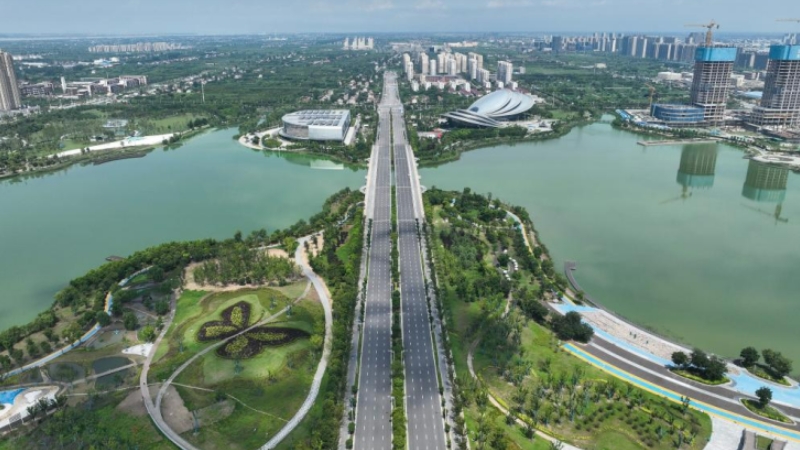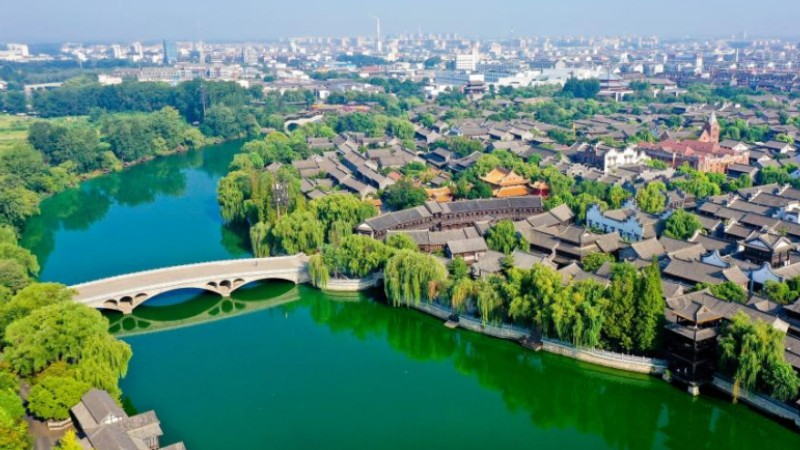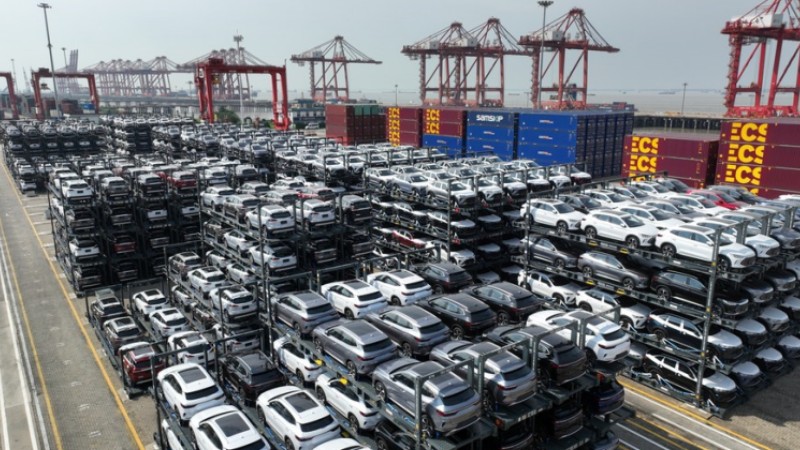Feature: Japan's "poison gas island" and lingering shadows of war atrocities
TAKEHARA, Japan, Aug. 17 (Xinhua) -- Nestled within the serene waters of Japan's Seto Inland Sea lies Okunoshima Island, a seemingly idyllic island with bouncing rabbits and cartoon bunny icons at every turn, but history unveils a much darker truth: the island was once a major hub for the production of chemical warfare agents.
Known as "poison gas island," Okunashima is also where poison gas used to be manufactured for Japan's invasive war against China.
Joining a group of anti-war activists, peace advocates, scholars, and students, Xinhua visited the island on Aug. 15, the 78th anniversary of Japan's unconditional surrender during World War II (WWII), to uncover its hidden history.
A 10-minute boat ride from Tadanoumi Port in Takehara City brings visitors to Okunoshima, where children can be seen gleefully chasing rabbits and feeding them. Little did they know that rabbits were once victims of a war of invasion.
Between 1929 and 1945, Japan produced a significant amount of chemical agents in defiance of international bans, with nearly 90 percent of them originating from Okunoshima. The island housed around 200 rabbits used for testing the efficacy of poison gases.
In an attempt to cover up their chemical warfare crimes after their defeat, Japan exterminated all experimental rabbits. Rabbits seen on the island nowadays were later introduced to attract tourists.
Masayuki Yamauchi, 78, is director of the Poison Gas Island Historical Research Institute, a civic group that gives tours of the poison gas facilities. He has been sharing the history of the "poison gas island" for 25 years.
As Japan's historical education focuses on the victim's narrative while neglecting its past as a perpetrator, most visitors are aware of "rabbit island" but remain oblivious to the dark history of the "poison gas island," Yamauchi told Xinhua.
Records indicate that the Japanese Imperial Army established a chemical gas factory on Okunoshima in 1927. From 1929 to Japan's surrender in 1945, over 6,000 people worked in the factory, producing poison gas that was transported continuously to the Chinese battlefields. Documented instances of Japanese chemical gas warfare on Chinese soil numbered more than 1,241, resulting in over 200,000 casualties among the Chinese military and civilians.
During the years of aggression, the Japanese government wiped Okunoshima off maps to protect its secrecy and banned entrance to the island without the permission of the military minister. This suppression of its aggressive history somehow persists to this day.
The Poison Gas Museum was established on the island in 1988, built through grassroots efforts and fundraising by peace advocates. The museum displays equipment for poison gas production, remnants of gas shells, gas masks, and documents ordering the use of gas in China, among others.
Visitors are strictly prohibited from taking unauthorized photographs within the museum. Sources familiar with the matter told Xinhua that permission from the mayor of Takehara City is required for photography, a hurdle most tourists cannot overcome. As a result, despite the museum's existence, a majority of Japanese visitors remain unaware of the island's sinister history.
"This essentially shifts the responsibility of reflecting on the war to the public, while granting the government the power to conceal history," remarked Chinese Consul General in Osaka Xue Jian.
Okunoshima, only tens of kilometers away from the city of Hiroshima with convenient transportation, receives drastically different treatment from the Japanese government and society compared to Hiroshima.
Hiroshima city, which was hit by the atomic bomb, has been carefully crafted as a symbol of war victims, and the site of the atomic bombing of Hiroshima has been carefully protected as a world cultural heritage. However, the historical legacy of the "poison gas island" just a short distance away is rarely visited.
"Maybe one day, bad politicians in Japan will wipe out what's left of this place," Yamauchi said worriedly.
Yamauchi also pointed out that the Japanese government enacted laws to compensate victims of the atomic bomb after the war, but those who suffered from the after-effects of the production of poison gas on Okunoshima were not compensated because the Japanese government did not want to disclose the dark history of the "poison gas island."
President of Fukuyama City University Toshiyuki Sato, who also joined the trip to the island, said that Japanese people should not only know the history of suffering from the atomic bombing but also must not forget the history of Japanese victimization similar to the "poison gas island."
In fact, the "poison gas island" has not completely become history. The chemical weapons produced here and abandoned by the Japanese army are still endangering the Chinese people.
On the eve of Japan's defeat in WWII, the Japanese army buried or abandoned a large number of unused chemical weapons on the spot in order to cover up their crimes and avoid accountability. These chemical weapons were found in over 120 locations across China in 18 provinces, autonomous regions and municipalities. Since Japan's defeat, abandoned chemical weapons have caused more than 2,000 Chinese casualties.
For a long period of time after the war, the Japanese government always avoided addressing the issue of abandoned chemical weapons in China. It was not until the late 1990s, under pressure from China and the international community, that the Japanese government signed a memorandum of understanding with China on the destruction of abandoned chemical weapons in China.
However, due to Japan's lack of sense of urgency and insufficient human and financial input, the destruction of abandoned chemical weapons has been delayed and overdue four times. In July this year, the Japanese government decided to significantly delay the completion of the work to 2027.
"We once again strongly urge the Japanese side to earnestly fulfill its responsibilities and obligations, comprehensively increase its input, speed up the work of the whole chain, clean up and completely eliminate the poisoning of Japanese abandoned chemical weapons at an early date, return a piece of pure land to the Chinese people, and ease the war pain of the Chinese people," said Xue.
Photos
Related Stories
- Symposium on legacy of resistance war against Japanese aggression held in SW China
- Feature: Ahn Jung-geun, fighter against Japanese aggression commemorated by China, South Korea
- Last 39 Nanjing Massacre survivors still waiting for apology
- Memories of resistance refreshed through China, S. Korea's years-long fight against Japanese aggression
- Seminar commemorating victory against Japanese aggression held in Beijing
Copyright © 2023 People's Daily Online. All Rights Reserved.









